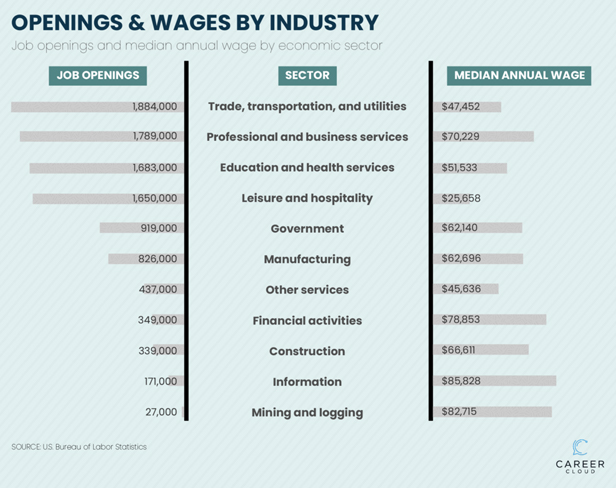September 15, 2021
Study Names 10 States Most Affected by Labor Shortages
It also identifies the top 10 states where there are surpluses of workers relative to open jobs.
Where are labor shortages worst in the US? This 45-second video tells you. @ASI_MBell @Melissa_ASI @asicentral pic.twitter.com/LAvuEZjpVk
— Chris Ruvo (@ChrisR_ASI) September 21, 2021
When it comes to the labor shortage in America, some states are faring worse than others.
That’s according to a new study from Career Cloud that analyzed data from the Bureau of Labor Statistics (BLS), Indeed, ZipRecruiter and CareerBuilder through August to determine which 10 states have been most and least affected by shortfalls in workers. Labor shortages have contributed to drops in service levels and longer order production times within the promotional products industry.

Graphic from Career Cloud.
Determined by measuring the number of unemployed people and job openings in each state, the study found that Washington, D.C. (which was included with the 50 states) was hardest hit by inadequate labor levels. There were 2.37 job openings per unemployed person.
Nebraska came second with 1.8 job openings per unemployed individual, followed closely by New Hampshire at 1.6. Rounding out the top 10 were Vermont (1.59), Utah (1.45), South Dakota (1.44), Idaho (1.29), Montana (1.21), North Dakota (1.2) and Georgia (1.12).
“Many observers have suggested that expanded unemployment benefits are keeping people from seeking jobs, while others blame the issue on the fallout from the COVID-19 pandemic,” Career Cloud wrote in its study. Childcare issues, skills gaps, fear of contracting COVID and other factors are likely playing a role, too.

Graphic from Career Cloud.
At the other side of the spectrum was Hawaii. With .41 job openings per unemployed person, the Aloha State had enough workers in terms of pure numbers to fill every open position and then some (that’s not saying they had requisite skills or willingness to work though), but not enough jobs.
A similar dynamic was at play in New York and California, which both registered .45 job openings per unemployed person. Rounding out the top 10 states least impacted by labor shortages were: Nevada (.50), Connecticut (.51), Louisiana (.52), New Mexico (.53), Arizona (.56), New Jersey (.59) and Illinois (.59).
The recently released Job Openings and Labor Turnover Survey from the Bureau of Labor Statistics showed that there were 10.9 million job openings in the United States as of the last business day of July, the most recent period for which numbers were available.
That was an issue, as there were only 8.7 million people out of work and seeking employment in July, creating a shortfall of 2.2 million between openings and available would-be workers.
This summer, 49% of small-business owners said they had job openings they couldn’t fill – the most on record, according to the National Federation of Independent Business.
Career Cloud noted that one way to attract labor in a tight market is to pay above the market rate – something companies in the promotional products industry have reported doing. “Business owners of all sizes will need to increase pay to keep up,” the study said.
Allowing for remote work where possible is another smart tactic for attracting workers during the pandemic – and will likely continue to be after it, the study said.
Meanwhile, employers keen to bring on quality workers should also consider incentivizing employees for commuting. “Employers could subsidize commuting costs, provide a corporate shuttle and offer longer but fewer shifts,” the study said.
Being compassionate and flexible with parental leave will also help make a company an employer of choice, according to the study.
